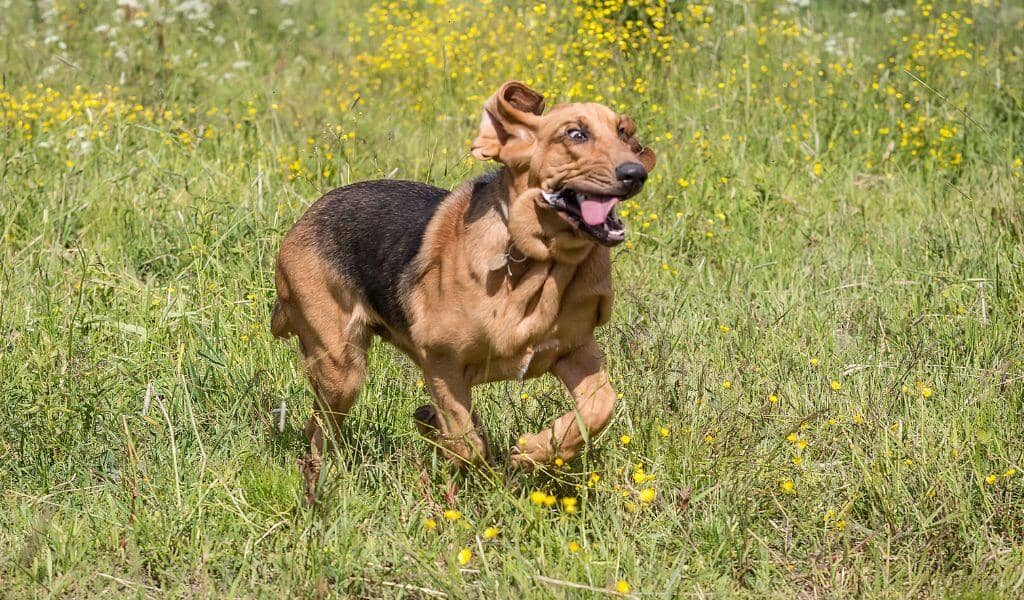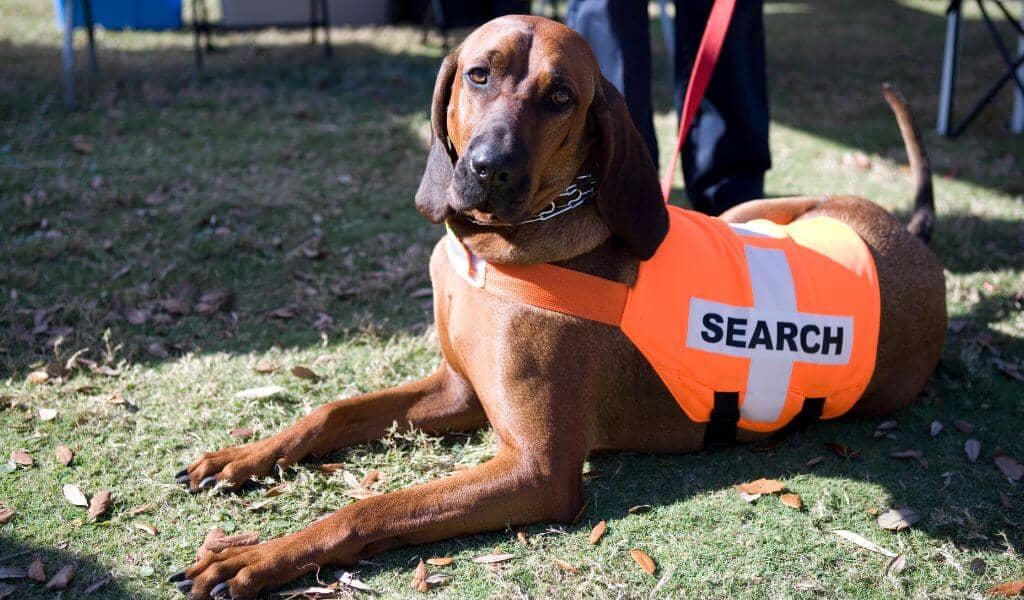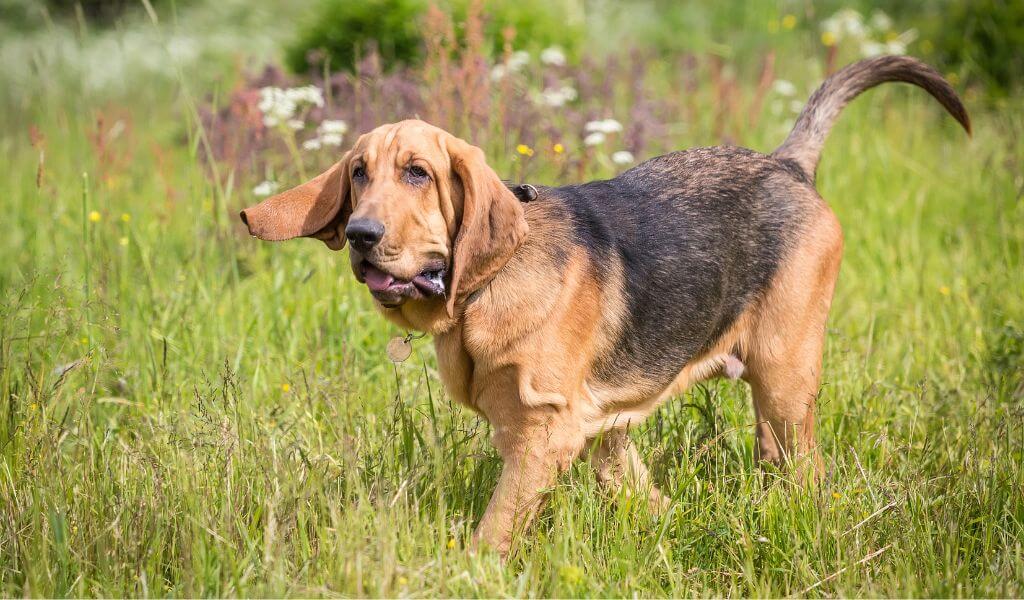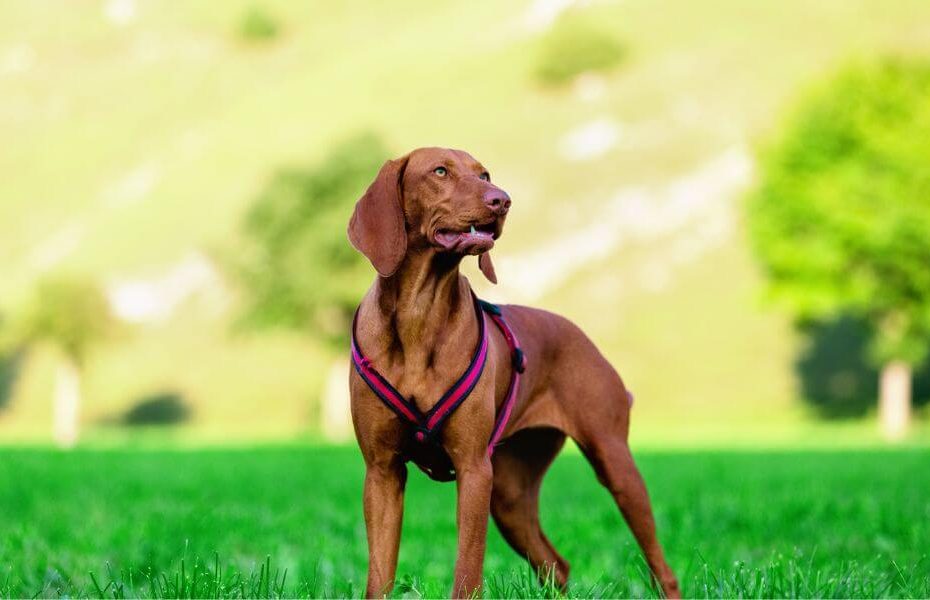Bloodhound, commonly known as St. Hubert hound, it is a dog breed. The breed is a powerful scent hound that was originally were developed to hunt deer, wild boar, and, since the Middle Ages, and tracking people.
This breed is famous for its ability to detect human scents across long distances, lot of days later. Its amazing sense of smell is paired with a strong and persistent tracking instinct, resulting in the ultimate scent hound, which is by police and military around the world to trace escaped inmates, and lost pets.
Content Overview
- Bloodhound overview
- History
- Appearance
- Temperament
- Health
- Care
- Feeding
- Grooming
- Training
- Advantages and Disadvantages
- Images
Bloodhound overview
Origin: France, Belgium and United Kingdom
Height: 25 to 27 inches males and 23 to 25 inches bitches
Weight: 90 to 110 pounds males and 80 to 100 pounds bitches
Coat: Fur is short, thick, and loose, with many folds around the face and neck, and ears.
Coat Color: Red, black and tan, or liver and tan
Life Span: 10 to 12 years
Temperament: Active, loving, even-tempered, obstinate, and gentle
Hypoallergenic: No
Group: Hound
Other name: Sleuth-hound, St. Hubert Hound, Chien de St. Hubert
Puppy price: Around $700 and $1200.
History
The Bloodhound was initially bred around AD 1000 by monks at the Saint-Hubert Monastery in Belgium; its likely origins are in France, which is home to many current hounds.
It is said to be the progenitor of the extinct Norman Hound and Saintongeois, and the contemporary Grand Bleu de Gascogne, Gascon Saintongeois, Ariegeois, and Artois Normande, and the Bloodhound.
Bloodhounds was assist law enforcement as well as search and rescue activities. Their abilities was so highly valued that confirmed by proven trailing bloodhound tracks are allowed was admissible in evidence in court. It has been speculated that it was a mixed-breed dog.
Appearance
Bloodhounds are massive, powerful and strong dogs that may weigh up to 110 pounds and stand 23 to 27 inches tall at the shoulder. Their most distinguishing features are a long, old face with loose skin, large, drooping ears, and warm, deep-set eyes that complete a solemn, dignified appearance.
The hue of the coat can range from black and tan to liver and tan to. Bloodhounds’ muscular legs allow them to scent over miles of difficult terrain. Bloodhounds have a large skeleton, with the majority of their weight concentrated in bones that are more thick for their length.
Temperament
Bloodhound dog is a wonderful companion that is kind, friendly, and excellent with children. This breed is lovely and tireless while following a scent. Bloodhounds are affectionate and even-tempered tolerant with people, making them ideal family pets.
Bloodhounds, being pack dogs, enjoy companionship from other dogs and children. They are laid-back, but their nose may usually lead them astray, so long walks in regions where they may scent are advised.
Health
Bloodhounds are usually healthy breed, however they are susceptible to some health issues, as with all breeds. They have an unusually high risk of gastrointestinal problems when compared to other breed canines, with stomach dilatation gastric dilatation volvulus being the most prevalent kind of gastrointestinal disease. This breed has an exceptionally normally risks of eye, skin, and ear problems.
Common Health Problems:
Ear infections: The Bloodhound’s long, droopy ears are often catch bacteria, dirt, debris . Examining and cleaning dog’s ears on a regular basis might help avoid infections.
Dermatitis: This breed’s face , like their ears, can collect dirt, germs, and even food, leading to fold dermatitis. sign of this condition by redness, irritation, sores, and smells, and it most usually affects the tail, face, and lips.
Gastric Dilatation-Volvulus: bloat, which is common in big breeds, is caused by an accumulation of gases in the stomach, which causes it to twist. Early symptoms include a bloated belly, retching without vomiting, and profuse drooling.
Care
Regular Brushing also helps to keep teeth clean. and distributes skin oils throughout the coat, which helps to keep it healthy. Bloodhounds should be washed regularly to avoid having a doggy stench. The Bloodhound’s nails, like those of all breeds, should be cut regularly.
Bloodhounds are high-energy canine who demand at least two hours of exercise every day. Running , hiking are their dogs excellent methods for to exercise . Bloodhounds can walk or jog for miles, yet they are equally happy to play in the backyard.
These bloodhounds dogs have a tendency to follow their noses and run away during walks or play, it is necessary to keep them on a leash or in a fenced-in yard. The breed is known for having the best center of any breed. Bloodhound will enjoy long and enjoyable walks with much to smell. They should also be let to run and play off-leash in a safe place.
Feeding
Bloodhounds require regular grooming and washing due to the lengthy, deep creases around their cheeks, necks, and ears. Wiping them with a washcloth and carefully drying them can prevent the formation of bacterial infections. After each meal, clean the creases around the mouth
Bloodhounds require a minimum of 18% protein and 5% healthy fats in their diet. Bloodhound will need to maintain its bones at this point. High-quality breed dog food should do well.
Grooming
Brush Bloodhound once a week, or more frequently if necessary, with diligently and completely. He sheds seasonally, and you may wish to use a shedding blade to remove surplus hair during that and that Keep in mind that his skin is delicate. If your dog’s nails are very long, that trim them monthly.
Clean his wrinkles daily to avoid bacterial infections. Wipe them down with a moist towel and then thoroughly dry them. Wipe the dirt outward from the outer ear canal using a cotton ball. If Bloodhound’s ears get infected despite best efforts, consult your veterinarian to establish the source of the illness.
Training
The Bloodhound is affectionate and devoted and also stubborn and independent, so the training requires patience, consistency, and skill. To keep the puppy or young dog interest strong, it is widely acknowledged that the foundation of beginning training is to make the young hound for the puppy.
They should be taught to work on different types of soil and to cope with different types of roads. While they should be trained to walk and running on a leash and harness, finding a scent work and sniffing games may provide an outlet for Bloodhound’s amazing nose while also keeping them healthy and happy.
Advantages and Disadvantages
Advantages
- Intelligent, smart
- Affectionate and lovely
- He gets along wonderfully with children
- Excellent watchdog abilities
- Excellent tracking abilities
- wonderful fragrance
Disadvantages
- Can be obstinate
- Barks loudly frequently
- Propensity to overeat
- Regular exercise is essential
Read also: Pachón Navarro Dog
Images



